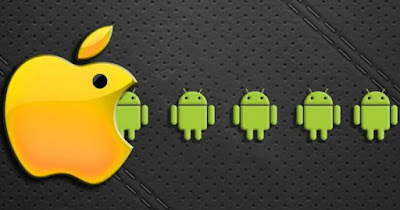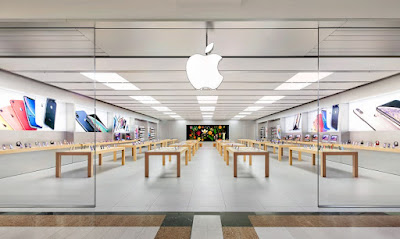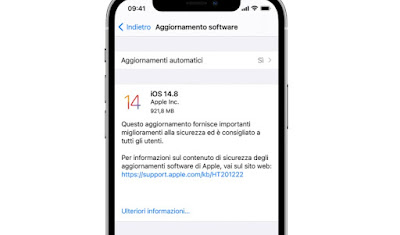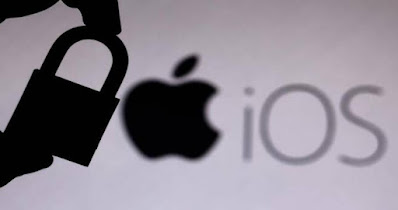
When purchasing a new phone, the doubt that torments users is always the same: Is it better to focus on an iPhone with iOS or buy an Android phone? While the two systems have become very close in terms of functionality and performance over the past few years, there are still some issues very obvious flaws of Android which could push users to spend a little more and opt for an iPhone right away.
If you too are gripped by doubt and don’t know which phone to choose, we have collected it in the following guide all the defects of the Android worldoften found to be decisive in guiding the choice of the undecided. The defects that we will expose to you are objectivethat is, they can be found on any Android phone or affect the entire ecosystem and cannot be ignored (we cannot ignore it even if we are avid Android fans).
READ ALSO -> iPhone defects that make Android smartphones preferable
Fragmentation
The most obvious flaw that has been talked about a lot is the ecosystem fragmentation. By fragmentation we mean the presence of numerous Android devices customized by manufacturerswhich can profoundly modify the basic operating system (Android Stock or AOSP), adding functions and features that other manufacturers do not have.
This fragmentation helps the sale of phones on the market but It’s a big deal from the perspective of Android app and update supportgiven that the manufacturer’s changes could be so profound as to prevent the correct launch of some apps (which on Google Pixels start without problems), not to mention the additional verification processes for each new Android release (which leads phones to obtain the much requested update even after one or two years from the official release).
Fragmentation has always been the curse and delight of the Android environment, which in fact suffers heavily from the presence of many stepchildren who only have the name and perhaps the basic kernel of Android. Anyone who wants an Android phone close to the iPhone philosophy must focus only on the Google Pixel, produced directly by Google and with the pure and simple operating system, without strange modifications.
Lack of assistance and dedicated support
One thing often underestimated by Android users is the total absence of dedicated support for your phone; In fact, there is no easily accessible support (even at home) that we can turn to in case of problems.
If we have a problem with a newly purchased Android phone we will have to contact (in the vast majority of cases) the shop that sold the phone, which for more serious problems will send it for assistance or change it under warranty (which is very rare unless let’s shop on Amazon). However, if the problem is minor, we are unlikely to receive resolving answers live in a shop or a shopping centre, given that a seller is not obliged to offer assistance (maybe he doesn’t even know what we are talking about!).
If, however, we have a problem with an iPhone we can contact any Apple Store or Apple R-Store present in Italy, who will provide us with the answers we are looking for or repair the phone under warranty or out of warranty (in the latter case we will obviously have to pay). Being able to get dedicated assistance wherever we are is probably the secret to the success of iPhonesdespite the very high initial expense to buy an Apple phone.
Same smartphone, different specs
Another plague that afflicts Android phones is the presence of different versions of the same phone model. This flaw particularly affects Chinese phones, which are often sold with different hardware and specifications in China. These hardware divergences perhaps make the phone better (or worse) than the one sold in Europe, creating fragmentation even if we examine only one phone model!
To this we also add the plague of branded telephoneswhich often differ from the original due to the presence of a greater amount of RAM or internal memory compared to the unbranded model.
All this leads to having two models identical in name but profoundly different in technical specifications: if there are differences, they are visible only in the product code or by reading the entire product sheet, thus making the nightmare scenario for every technology enthusiast real: a poor user, convinced to buy a phone with 8 GB of RAM, finds himself with only 6 GB of RAM because the phone is branded or because he bought the less powerful model intended for the European market or a model intended only for India or to China.
5G may not even work on some modelsbecause perhaps specific for use in China (even if the packaging specifies that it is a 5G phone).
None of this happens with an iPhone: if we choose a specific iPhone model it will be the same in all parts of the world and we will therefore have the same specifications in India, Germany, Italy and the United States, as well as having the certainty that 5G will work everywhere.
Frequency of updates
We couldn’t fail to mention updates among Android’s chronic defects. When Google releases a new version of Android very few manufacturers rush to certify the version for their devicesmaking the race for updates more of an obstacle course.
Even if from this point of view they exist many Android manufacturers who update quicklyevery time Apple releases an update it is available for all compatible iPhones.
To this we add that Apple updates its devices for at least 4 years, always introducing the most innovative functions even on older iPhones. Those who choose iPhone and don’t have the mania of updating their phone every year can keep their iPhone for up to 5 years, with the certainty that it will work well and will receive all the necessary updates.
Safety
The last objective flaw of the Android ecosystem concerns the safety, which is deeply linked to the flaws we have exposed to you so far. If Google releases a security update for a very serious bug (and it happens very often lately), This update should be available on all phones running the Android operating systemwhich however does not happen.
Android fragmentation is therefore its biggest Achilles heel from a security point of view: even after an update to resolve a serious bug, there will be some Android phones that have not received the updatethus remaining exposed to the bug and the probable theft of data, information or, worse, money.
Those who focus on iPhone will still be exposed to bugs or security problems, but Apple constantly releases security updates which are provided to all phones still supported by the company.
With Apple, within minutes of releasing the update, only a very few iPhones around the world will remain exposed (usually those that are turned off or older phones that are not supported but are still in use). This also explains why antivirus is totally useless on iPhone while on Android it is often advisable install a powerful antivirus.
Conclusions
The ones we have exposed above are the defects that still afflict the Android world and that push users to focus on iPhones anyway, despite the new releases of the Google system, they have greatly reduced the effects of fragmentation. Anyone who wants an Android smartphone does so to save money, and even if it’s on the market However, there are Android models worth over €1000these rarely offer the same support as an iPhone, the total compatibility with apps and the frequency of updates that an iPhone of the same price can offer.
If we don’t know which iPhone to buy, we can help ourselves in choosing by reading our guide on which iPhone is best to buy today.





